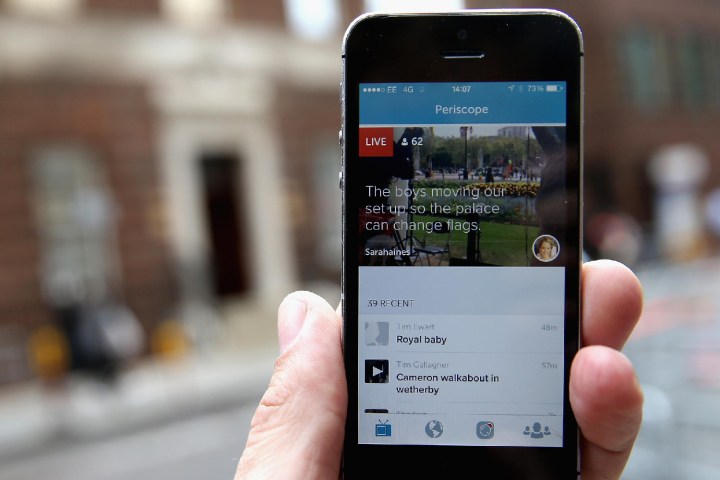
The attention to detail within search, perhaps the most visible of Periscope’s incoming features, is apparent. You can sort broadcasters and broadcasts in a practically endless number of ways: by the hashtag of your choosing, using tags as specific as “first-time broadcasters” and “aerial footage,” or by Twitter’s suggested categories (e.g., music, food, art, and travel). The usefulness of search is predicated on broadcaster participation, of course — only live streams with hashtags in their titles are searchable — but it’s an encouraging first attempt at making sense of Periscope’s fire hose of real-time content. And more importantly, it’s one that co-founder Kayvon Beykpour told The Verge he’s committed to improving. “We’re still scratching the surface, but this is our starting place,” he said.
Beyond search, Periscope is changing the way it handles live streams. Instead of deleting footage after the first 24 hours of availability, as was the previous behavior, broadcasters now have the option of retaining them indefinitely. Starting a video stream with the #save hashtag in the description triggers a recording — post-broadcast, it’ll remain available on Periscope users’ profiles and within tweets to which it was linked. You can still choose to delete live-streamed sessions or set them to disappear by default, of course, but crucially, the enhanced archival option brings Periscope to parity with competing offerings from Facebook and others.
The impetus for move away from a 24-hour window, said Beykpour, was evolving perceptions — and a growing acceptance — of spur-of-the-moment, spontaneous broadcasts. “At the time we had started Periscope, people hadn’t really embraced live video,” he told the Verge. “It felt like this incredibly stressful activity — why would I put myself on stage around people?” But since then, Beykpour believes, users have “moved past that world.” He said, “We’re frankly shocked the world evolved that quickly — but that’s great.”
Economics was another likely motivator. Logistically, ephemeral video presents a barrier to monetization, and while Periscope’s so far refrained from putting any form of advertising in front of its legion of eyeballs, Twitter sees an opportunity for monitization in the service’s maturation. It recently hired Evan Hansen, former editor at Medium and Wired, as editor-in-chief, a role that Periscope said will involve cultivating partnerships with media organizations and building new narrative products.
The service’s final big feature addition, support for DJI’s popular remote-controlled quadcopters, will no doubt play a part in attracting the attention of said organizations. The Chinese company’s Phantom Inspire, Phantom 4, Phantom 3 Professional or Advanced models can now stream footage on the service directly (the Periscope smartphone app on your phone acts as a remote control, letting you pan, tilt, and zoom from ground level). The new feature, in tandem with Periscope’s GoPro integration, promises an untold level of freedom for well-equipped broadcasters: You can switch seamlessly between a GoPro or Phantom camera during live streams.
If Periscope’s announcement seems timed conspicuously after Facebook’s expansion of live video streaming, that’s because it is. In fact, the new features — search, long-term video archival, and DJI Phantom integration — read like a laundry list of responses to
Importantly, though, Periscope’s favored organic growth in the sense that it, unlike Facebook, doesn’t pay broadcasters for content. It managed to hit 200 million broadcasts in the first quarter of this year that way, but time will tell whether the approach can withstand its competitors’ investments.


